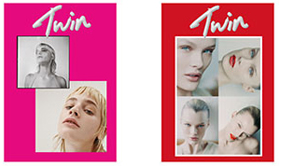The ISelf Collection: Self Portrait as the Billy Goat is part of the Whitechapel Gallery’s program that displays rarely seen collections from around the world. The collection features twenty-five pieces from international artists, incorporating works by Cindy Sherman, Louise Bourgeouis and Tracey Emin, among many others. This is the first segment of the four-part show, which will explore the notion of self in terms of our identity as an individual, in relation to others, to society, and as part of the wider world. Through surrealist selfies and self-portraiture, the pieces in this chapter reveal how artists stage their own bodies or self-reflections, to examine how we build our sense of personal identity.
Among the works is Yayoi Kusama’s Infinity Nets, part of an ongoing series of white paintings that explore the inner workings of her mind, as well as Prem Sahib’s Undetectable sculpture of an AIDS test, and Pawel Althamer’s self-portrait The Thinker, in which he is represented as a Billy Goat, and from which the collection took its name. Each piece is a self-portrait, exploring physical, psychological and imaginary dealings with our selves. We spoke to curator Emily Butler to find out more about the collection.
Why did you want to have this collection at the Whitechapel Gallery?
This is the first public display of the ISelf Collection and it is part of our program of introducing intriguing and important collections to the public. The collection was established in 2009 by Maria and Malek Sukkar and it uses painting, sculpture and photography to explore the human condition. It looks at themes of birth, death, sexuality, love and pain and includes works by major international artists. We are also interested in revealing the collection’s wide geographic range, which includes works by artists from the Middle East and Latin America, and its strong focus on women and figuration.
Why was the collection named after the piece ‘Self-portrait as the Billy Goat’?
The first display of the ISelf Collection is named after one of the works in the show, a melancholic 2011 portrait of the artist Pawel Althamer in the guise of Auguste Rodin’s Thinker, with the additional twist that he is also representing himself as a flayed Billy Goat. The show itself focuses on self-portraiture, and the different ways that artists choose to represent themselves in various media. Here the artist chooses to show himself not as a perfect idealized thinking man, embodied by Rodin’s sculpture, but as an emotional individual, who feels sad as a scapegoat figure inspiring ridicule, or who feels weak, as we can see his bones underneath his flayed skin.
What themes unite the works in the collection?
As mentioned, the collection is interested in the human condition, or the self, hence its name ISelf, which plays on the existential dilemma that is inherent to human nature; the relation between the idea we have of ourselves as individuals ‘I’, and our relation to others ‘myself’. This is why we have curated the show in four chapters, looking at the how artists explore the complex subject of human identity in its different forms.
How are the artists’ bodies, or self-reflections, used to bring out these themes?
The artists in this first display are looking at our sense of ‘self’, as all the works are self-portraits. Essentially this show examines what the ‘self’ in ‘self-portrait’ means. The fourteen artists in the display have chosen different approaches: physical, psychological and imaginary, to represent themselves. Pawel Althamer has chosen a figurative approach, testing the limits of his body in order to explore a range of feelings about his identity and persona. Yayoi Kusama offers a very different way of representing her thoughts and feelings by creating an intricate painting of connecting circles or what she calls ‘Infinity Nets’, essentially an abstract representation of the landscape of her mind.
Identity is integral to the collection. In what different ways do the participants explore identity in their work?
One of the earliest works in the show is a series of photo strips by André Breton and his friends from the Surrealist group. These were taken in 1929 in one of the first Parisian photo booths, and are a great example of experimental instantaneous self-portraiture. Rather than choosing a straightforward pose, they look sideways or away from the camera, playing with different poses – smoking, thinking or laughing. Taken at a time when the group were formulating their second manifesto, these images show their common interests in chance and the unconscious, but also their different personalities, as they choose to depict themselves as multi-faceted individuals.
Are there any works in the collection that particularly stand out to you?
We chose You search but do not see (1981-2010) by Linder for the cover of the catalogue as it is such a striking image. It intrigues us as the artist has depicted herself with an alluring pearl necklace in a New Romantics outfit, but it is also incredibly disturbing as she appears to be almost suffocating in a plastic bag. Here Linder is playing with how women have been ‘captured’ and idealized throughout art history and in present day mass media. Incidentally, this work was produced in a booklet accompanying the release of the artists’ punk band Ludus’ cassette, whose songs examine the subjects of hiding, searching and finding, evoked in the work’s title. However, there are many more exciting works in the display, and more to discover in the upcoming three other chapters of the show.
ISelf Collection: Self-portrait as the Billy Goat is on show at the Whitechapel Gallery from 27 April until 20 August 2017.

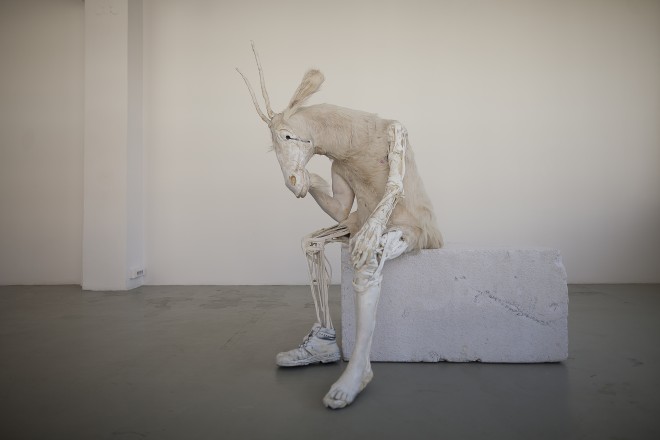
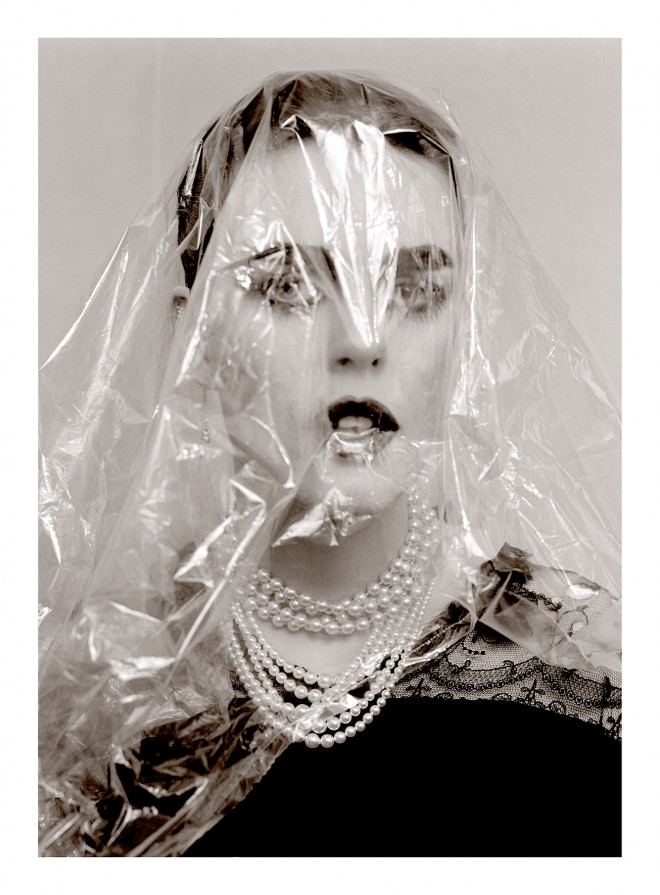
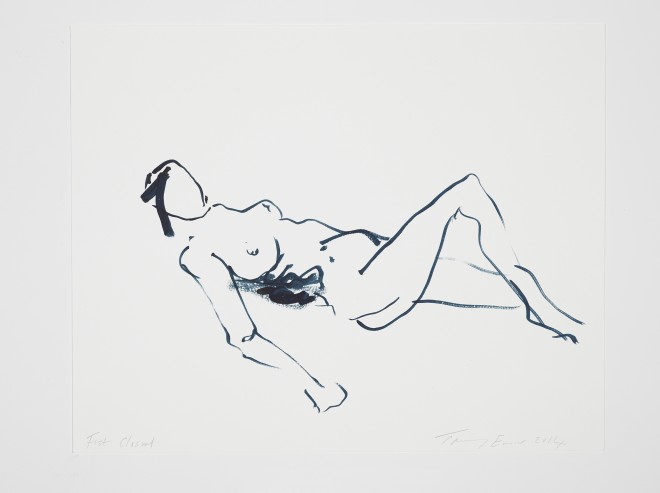
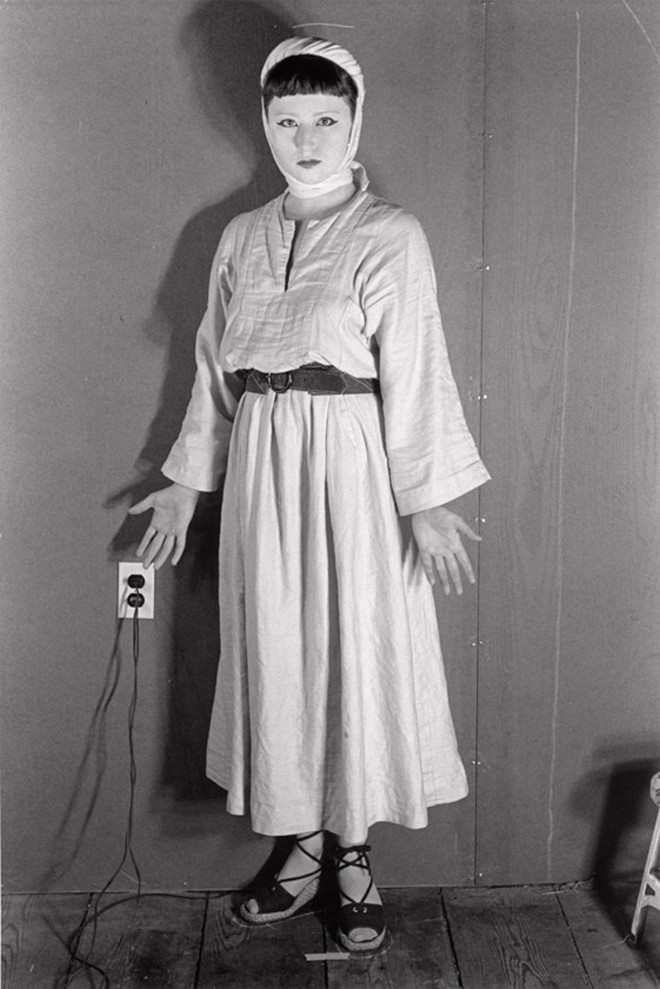
 PREVIOUS
PREVIOUS

 Twitter
Twitter
 Tumblr
Tumblr
 YouTube
YouTube
 Facebook
Facebook
 Instagram
Instagram
